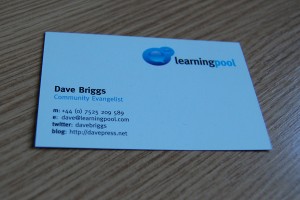Curation is an answer to the problem of information overload. There’s so much stuff online these days – how do you read it all? Or rather, how do you decide what’s worth your attention?
A way for an individual or organisation to build a community or network digitally is to become a trusted curator – in other words, getting popular by sorting the wheat from the chaff on other’s behalf.
There are quite a few tools out there to help you do it. Here’s a few.
1. Social bookmarking
I use Pinboard, but there’s also Delicious and Diigo, amongst others. You see a site or page you like, so you save it to your bookmarks usually using a button on your browser. You describe the link, tag it with keywords, and it joins a public list that others can browse.
I also republish all my bookmarks as occasionally posts here on the blog – I doubt if anyone ever actually looks at my Pinboard page.
2. Storify
Storify is a neat tool for bring content together in a single place around a certain event or topic. So whether it’s photos, videos, tweets, blog posts or whatever, every type of content can be added to a single page, making it potentially the top destination for someone wanting to find out about that topic.
3. Pinterest
A pretty new site this, and still invite-only I think. Pinterest is all about visual stuff, encouraging users to ‘pin’ images and videos they see on the web to their own ‘boards’ or group boards along shared themes.
There’s a big social element to Pinterest too, with users encouraged to ‘repine’ things they’ve seen on others boards to pass them on to their friends, and so on. Bit like retweeting I guess.
4. Paper.li
Paper.li is an automated curating thingy that pulls tweets and stories linked to in tweets together for you, publishing them in a daily ‘newspaper’ of useful content. This is all based on your own followers’ activity, so hopefully all the content ought to be relevant and interesting.
It’s good because it’s automated and you don’t have to do a lot to make it work. It’s bad because it’s automated and you don’t have a huge amount of control over what it publishes.
5. Tumblr
As well as being a blogging tool you can use to publish your own original pearls of wisdom, a lot of people use Tumblr to curate, by ‘reflagging’ stuff they’ve seen elsewhere. Again, Tumblr makes this easy by using a button in your browser. Increasingly popular amongst young people who wouldn’t normally be seen dead doing something as dorky as blogging, Tumblr’s a huge and growing network of people sharing, resharing and reresharing content.
It’s also home to some hilarious themed sites – like Glum Councillors, for example.
That’s it
There’s five from me – any more?

 My role at
My role at